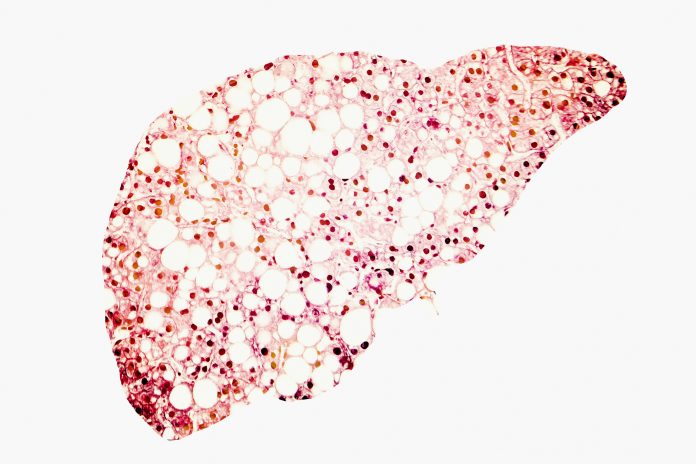
Nonalcoholic fatty liver disease (NAFLD) is the most common pediatric liver disease, affecting millions of children in the United States. Now researchers demonstrate a connection between NAFLD and diabetes risk.
The new findings appear in Clinical Gastroenterology and Hepatology.
“This is alarming because type 2 diabetes in youth is a much more aggressive disease than in adults, with more immediate and serious complications and outcomes,” said Jeffrey Schwimmer, MD, professor of pediatrics at University of California San Diego School of Medicine and director of the Fatty Liver Clinic at Rady Children’s Hospital-San Diego. Schwimmer served as senior author and led the study.
“Type 2 diabetes (T2D) is a growing problem in children. Children with NAFLD are at potentially high-risk for developing T2D; however, the incidence of T2D in this population is unknown. This study aimed to determine the incidence of T2D in children with NAFLD and identify associated risk factors,” write the investigators.
“Children with NAFLD enrolled in the Nonalcoholic Steatohepatitis Clinical Research Network were followed longitudinally. Incidence of T2D was determined using clinical history and fasting laboratory values. Cumulative incidence curves were developed for time to T2D. A Cox regression multivariable model was constructed using best subsets Akaike’s Information Criteria selection.
“This study included 892 children with NAFLD and with a mean age of 12.8 (2.7) years followed for 3.8 (2.3) years with a total 3,234 person-years at risk. The incidence rate of T2D was 3,000 new cases per 100,000 person-years at risk. At baseline, 63 children had T2D, and during follow-up, an additional 97 children developed incident T2D, resulting in a period prevalence of 16.8 %. Incident T2D was significantly higher in females versus males (HR 1.8 [1.0-2.8]), associated with BMI z-score (HR 1.8 [1.0-3.0]), and more severe liver histology including steatosis grade (HR 1.3 [ 1.0-1.7]), and fibrosis stage (HR 1.3 [1.0-1.5]).
“Children with NAFLD are at high risk for existing and incident T2D. In addition to known risk factors for T2D (females and BMI z-score), severity of liver histology at the time of NAFLD diagnosis was independently associated with T2D development. Targeted strategies to prevent T2D in children with NAFLD are needed.”
“These findings have clinical implications for gastroenterologists caring for children with NAFLD,” according to Schwimmer. “They should be aware of the risk and provide monitoring, anticipatory guidance and lifestyle interventions that help their patients avoid developing type 2 diabetes.”













